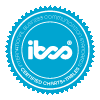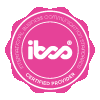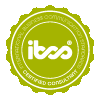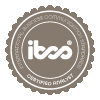
Definition of Business Communication
Business Communication means the materialization (e.g. paper, screen views) of quantitative information for analytical and reporting objectives. We organize business communication into products (e.g. reports, presentations, statistics, analytic applications), consisting of one or more pages (e.g. PowerPoint slides, screens) comprised of objects (e.g. charts, tables, text, pictures) with both specific elements (e.g. columns, axes, labels) and general elements (e.g. titles, comments).
Communication products
Assembling one or more pages into a report or presentation creates a (communication) product.
Reports are written documents with a predetermined, consistently applied formal structure such as
- Statutory annual and quarterly reports
- Management reports
- Project reports
- Decision memos
- Records, minutes, proceedings
- etc.
Interpretations and summaries by the authors are mandatory parts of any report. Reports report something; they are written to convey messages to defined addressees.
Presentations are formal verbal communications concerning situations such as
- Status of projects
- Interpretations of current financial figures
- Speeches on the business outlook
- Preparation stages in the decision-making process for major investments
- Training
- etc.
Interpretations and summaries by the authors are mandatory parts of any presentation.
Addressing only the material used in presentations (presentation material), the IBCS Standards take into account the design of the slides projected during the presentation and the handouts distributed before or after the presentation. In this sense, presentations are a short form for presentation material.
Statistics – in contrast to reports – are data compilations without messages by the authors. Statistics do not make use of charts and tables to support a given message, rather they aid in finding a message, demanding active search and analysis by the users. In general, comprehensive statistics have a detailed list of contents but lack a message.
In practice, no clear border exists between reports and statistics.
Interactive analytic applications (e.g. management information systems, reporting applications) are compilations of interactive statistics covering a certain business topic (e.g. analysis of sales). Similar to statistics, these software solutions do not make use of charts and tables to support a given message, rather they aid in finding a message, demanding active search and analysis by the users.
Analytic applications are being built using information technology like analytic databases and Business Intelligence software.
Although they focus on reports and presentations, the IBCS® Standards can be used for the design of interactive analytic applications, too.
Communication pages
Single pages in a written report, one slide of a presentation or one screen view of an interactive analytic system are called (communication) pages. The page size and grid determines the layout.
The size of a page depends on the application and the media used to display the report or presentation material. The IBCS Standards recommend a corporate-wide standardization of page sizes for the different products.
A thorough and consistent grid concept in all management reports and presentation material makes it easier to obtain an overview. A grid concept allocates the objects and general elements in the visualization space. The IBCS Standards recommend the development and use of corporate template grids for the most common page types and sizes.
Dashboards are pages of an interactive analytic system designed to achieve a high rate of visual perception: the time necessary for the reader to oversee und understand the situation illustrated by the charts and tables of a dashboard is a valid quality criterion.
Communication objects
The charts, tables, texts and pictures posted on a page are called (communication) objects. Communication objects represent an analytic view of a situation and can stand alone with or without a corresponding message.
Communication elements
Objects are comprised of (communication) elements such as object specific visualization elements (e.g. bars, columns, lines), legends, labels, axes, etc. In addition, general elements exist such as titles, footnotes, and messages, which are not used for the construction of objects but necessary for the design and understanding of complete pages.






